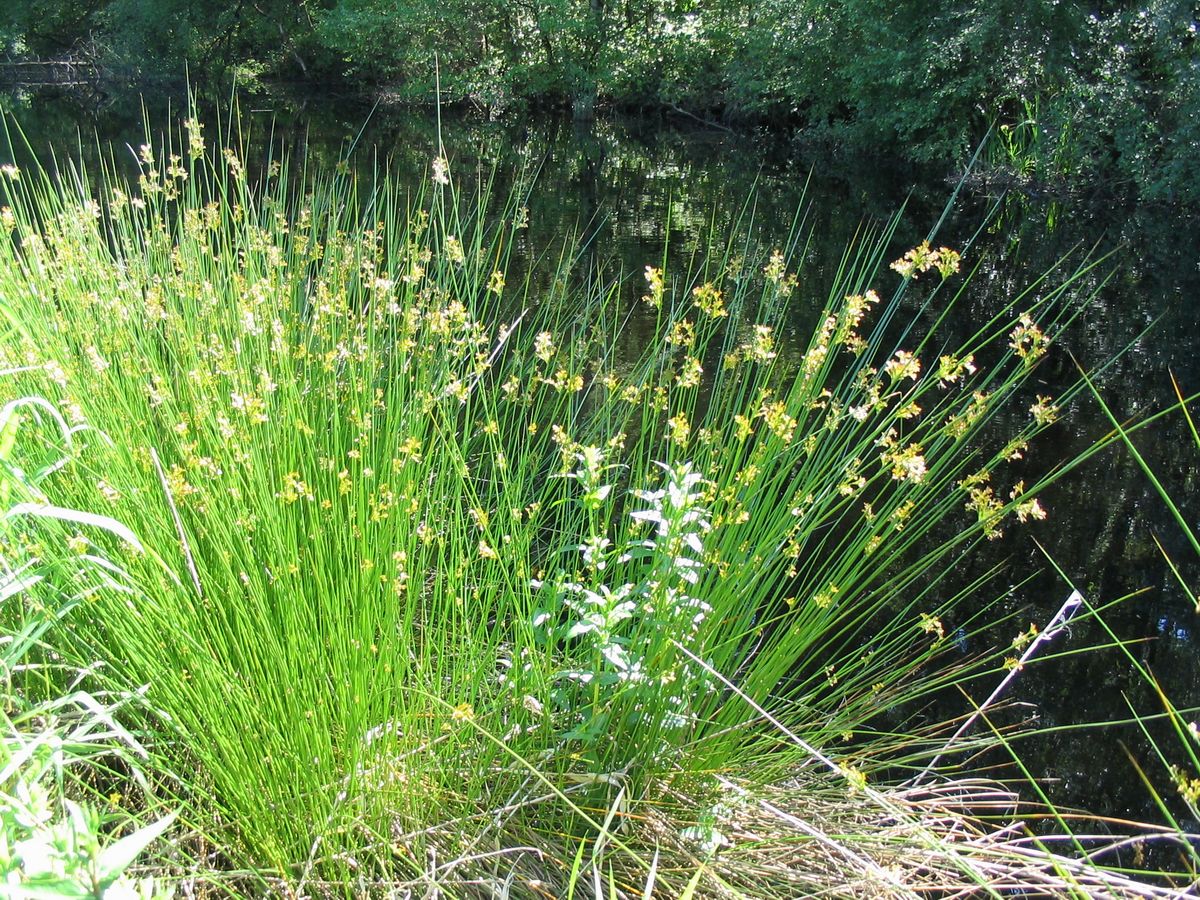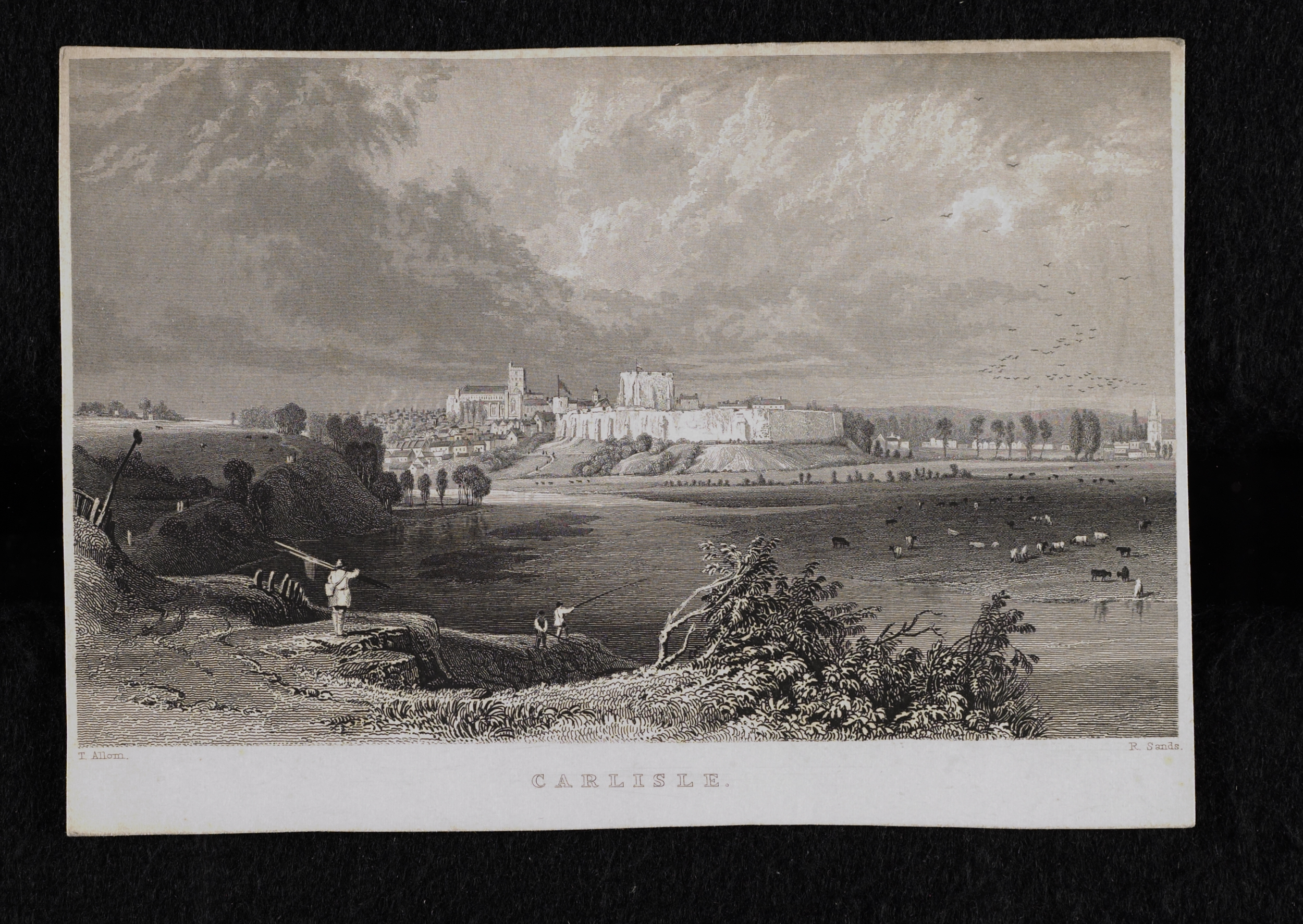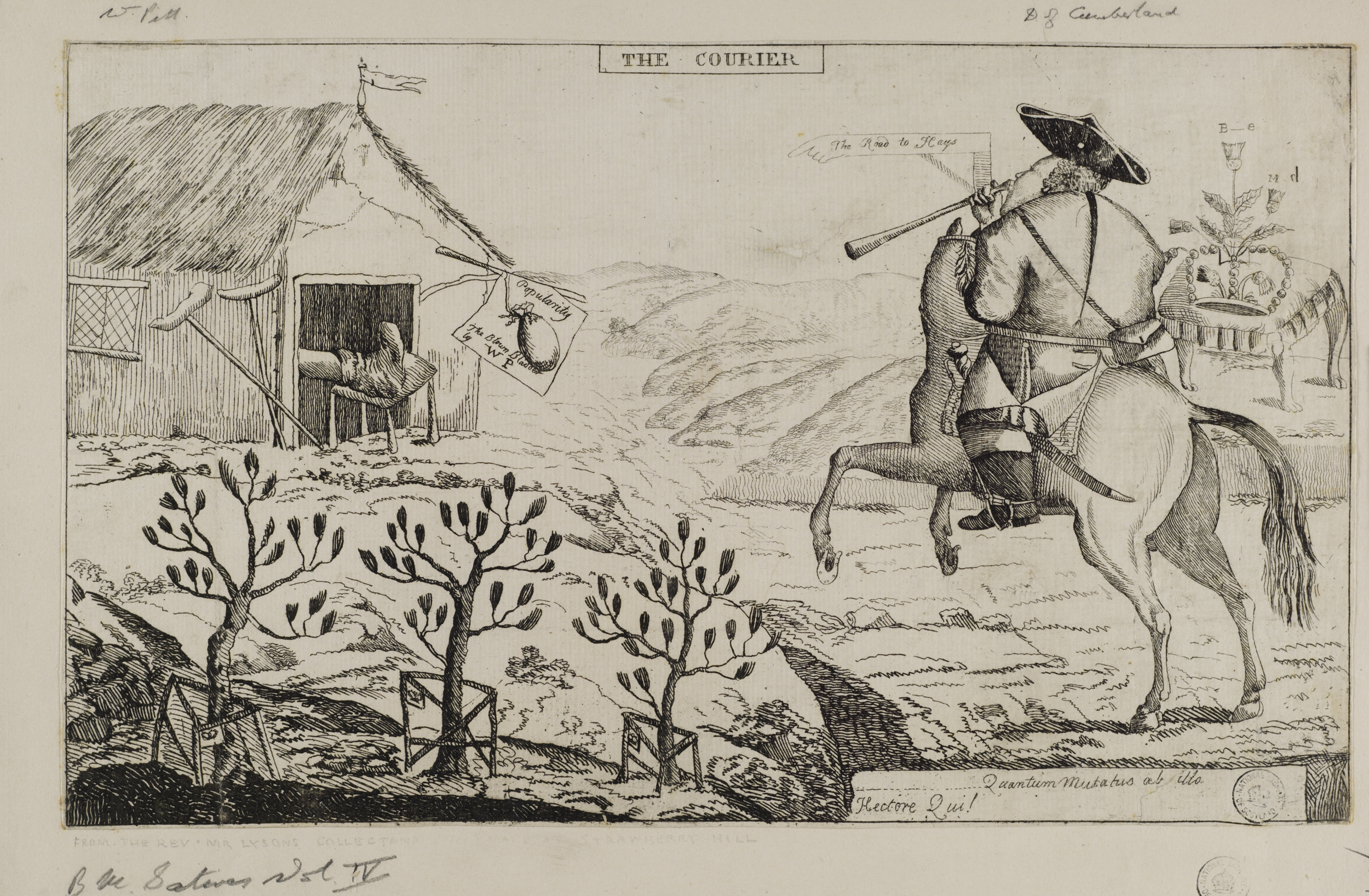|
Timeline Of Carlisle
The following is a timeline of the history of the city of Carlisle, Cumbria, England, United Kingdom. Prior to the 19th century *Reign of emperor Nero - Carlisle is burned down. *73 - Winter: a Roman timber fort is constructed in what is now the site of Carlisle Castle. *83 - the Roman fort at Carlisle is reconstructed. *685 - Saint Cuthbert visits Carlisle. *1092 - William II invades the area surrounding Carlisle and reincorporates Carlisle into England after it had been taken by the Scots. *1093 - construction on Carlisle Castle begins. *1112 - Carlisle Castle is reconstructed. *1113 - an Augustinian priory becomes Carlisle Cathedral. *October 1664-June 25, 1665 - Siege of Carlisle takes place in which Covenanters and Parliamentarians besieged Carlisle Castle which was held by Royalist forces loyal to King Charles I during the First English Civil War. *1745 **13-15 November: Siege of Carlisle takes place during the Jacobite Rising of 1745 in which Jacobite forces led by C ... [...More Info...] [...Related Items...] OR: [Wikipedia] [Google] [Baidu] |
Carlisle
Carlisle ( , ; from ) is a city in the Cumberland district of Cumbria, England. Carlisle's early history is marked by the establishment of a settlement called Luguvalium to serve forts along Hadrian's Wall in Roman Britain. Due to its proximity to Scotland (being located south of the current Anglo-Scottish border), Carlisle Castle and the city became an important military stronghold in the Middle Ages. The castle served as a prison for Mary, Queen of Scots in 1568 and currently hosts the Duke of Lancaster's Regiment and the Border Regiment Museum. A priory was built in the early 12th century, which subsequently became Carlisle Cathedral in 1133 on the creation of the Diocese of Carlisle. As the seat of a diocese, Carlisle therefore gained city status. Carlisle also served as the county town of the historic county of Cumberland from the county's creation in the 12th century. In the 19th century, the introduction of textile manufacture during the Industrial Revolu ... [...More Info...] [...Related Items...] OR: [Wikipedia] [Google] [Baidu] |
Jacobite Rising Of 1745
The Jacobite rising of 1745 was an attempt by Charles Edward Stuart to regain the Monarchy of Great Britain, British throne for his father, James Francis Edward Stuart. It took place during the War of the Austrian Succession, when the bulk of the British Army was fighting in mainland Europe, and proved to be the last in Jacobite risings, a series of revolts that began in Jacobite rising of 1689, March 1689, with major outbreaks in Jacobite rising of 1715, 1715 and Jacobite rising of 1719, 1719. Charles launched the rebellion on 19 August 1745 at Glenfinnan in the Scottish Highlands, capturing Edinburgh and winning the Battle of Prestonpans in September. At a council in October, the Scots agreed to invade England after Charles assured them of substantial support from English Jacobitism, Jacobites and a simultaneous French landing in Southern England. On that basis, the Jacobite Army (1745), Jacobite army entered England in early November, but neither of these assurances proved ac ... [...More Info...] [...Related Items...] OR: [Wikipedia] [Google] [Baidu] |
River Petteril
The River Petteril is a river running through the English county of Cumbria. The source of the Petteril is near Penruddock and Motherby, from where the young river runs southeast through Greystoke, Blencow and Newton Reigny, before passing under the M6 motorway, after which the river turns north, and the motorway roughly follows the course of the river towards Carlisle. Having reached Carlisle, the Petteril runs a course through the south east of Carlisle, dividing the suburbs of Harraby, Upperby and Botcherby, and running alongside the West Coast Main Line for a significant distance, before joining the River Eden on its journey to the Solway Firth The Solway Firth is an inlet on the west coast of Great Britain, forming part of the border between England and Scotland. The firth (a Scottish term for an inlet of the sea) divides Cumbria (including the Solway Plain) from Dumfries and Gallow .... Along its course, the major tributaries of the Petteril include the River ... [...More Info...] [...Related Items...] OR: [Wikipedia] [Google] [Baidu] |
River Caldew
The River Caldew is a river running through Cumbria in England. The river rises high up on the northern flanks of Skiddaw, in the Northern Fells area of the English Lake District, and flows in a northerly direction until it joins the River Eden on the north side of the city of Carlisle. The Cumbria Way follows most of the course of the river, from its early stages in the ''Skiddaw Forest'' to Carrock Fell and again from Caldbeck through to the centre of Carlisle. Etymology " Probably 'the cold river', from OE 'cald' and OE 'éa' 'river', influenced by OFr 'ewe' 'water'....However, the possibility that this is a Brit. shname meaning 'swift river' from the same root as 'Calder' cannot be ruled out altogether." (OE=Old English, OFr=Old French, Brit.= British language). Source of river The River Caldew's source is high up on Skiddaw, between the Summit (topography)">summit and Sale How. Candleseaves Bog is an area of wetland between Skiddaw and Great Calva that contr ... [...More Info...] [...Related Items...] OR: [Wikipedia] [Google] [Baidu] |
River Eden, Cumbria
The River Eden is a river that flows through Cumbria, England. It rises on Black Fell Moss, near the village of Outhgill, and runs in a generally north-westerly direction through the Vale of Eden and Solway Plain before reaching the sea at the Solway Firth. Etymology The river was known to the Romans as the ''Itouna'', as recorded by the Greek geographer Claudius Ptolemaeus (Ptolemy) in the 2nd century AD. This name derives from the Celtic word ''ituna'', meaning ''water'', or ''rushing''. Thus, there is no relation to the biblical Garden of Eden. Course of river The Eden rises in Black Fell Moss, Mallerstang, on the high ground between High Seat, Yorkshire Dales and Hugh Seat. Here it forms the boundary between the counties of Cumbria and North Yorkshire; the river gave its name to the former Eden district of Cumbria. Two other rivers arise in the same peat bogs here, within a kilometre of each other: the River Swale and River Ure. It starts life as Red Gill Beck, ... [...More Info...] [...Related Items...] OR: [Wikipedia] [Google] [Baidu] |
Annual General Meeting
An annual general meeting (AGM, also known as the annual meeting) is a meeting of the general membership of an organization. These organizations include membership associations and companies with shareholders. These meetings may be required by law or by the constitution, charter, or by-laws governing the body. The meetings are held to conduct business on behalf of the organization or company. Purpose An organization may conduct its business at the annual general meeting. The business may include electing a board of directors, making important decisions regarding the organization, and informing the members of previous and future activities. At this meeting, the shareholders and partners may receive copies of the company's accounts, review fiscal information for the past year, and ask any questions regarding the directions the business will take in the future. At the annual general meeting, the president or chairman of the organization presides over the meeting and may gi ... [...More Info...] [...Related Items...] OR: [Wikipedia] [Google] [Baidu] |
Carlisle United F
Carlisle ( , ; from ) is a city in the Cumberland district of Cumbria, England. Carlisle's early history is marked by the establishment of a settlement called Luguvalium to serve forts along Hadrian's Wall in Roman Britain. Due to its proximity to Scotland (being located south of the current Anglo-Scottish border), Carlisle Castle and the city became an important military stronghold in the Middle Ages. The castle served as a prison for Mary, Queen of Scots in 1568 and currently hosts the Duke of Lancaster's Regiment and the Border Regiment Museum. A priory was built in the early 12th century, which subsequently became Carlisle Cathedral in 1133 on the creation of the Diocese of Carlisle. As the seat of a diocese, Carlisle therefore gained city status. Carlisle also served as the county town of the historic county of Cumberland from the county's creation in the 12th century. In the 19th century, the introduction of textile manufacture during the Industrial Revol ... [...More Info...] [...Related Items...] OR: [Wikipedia] [Google] [Baidu] |
Strand Road Drill Hall, Carlisle
The Strand Road drill hall is an arts center and former military installation in Carlisle, Cumbria. History The building was designed as the headquarters of Carlisle Rifle Volunteers on land granted by the Duke of Devonshire and was built between 1873 and 1874. This unit evolved to become the 1st Volunteer Battalion, The Border Regiment in 1883 and the 4th (Cumberland and Westmorland) Battalion, The Border Regiment in 1908. The battalion was mobilised at the drill hall in August 1914 before being deployed to India. The building went on to serve as the head office of the East Cumberland National Shell Factory in September 1915. After the battalion headquarters moved to the Queen Katherine Street drill hall in Kendal Kendal, once Kirkby in Kendal or Kirkby Kendal, is a market town and civil parish in the unitary authority of Westmorland and Furness, England. It lies within the River Kent's dale, from which its name is derived, just outside the boundary of t ..., the Strand R ... [...More Info...] [...Related Items...] OR: [Wikipedia] [Google] [Baidu] |
Port Carlisle
Port Carlisle is a coastal village in Cumberland, Cumbria, England. It is in the civil parish of Bowness-on-Solway. Its original name was Fisher's Cross, but when it became the terminus of the Carlisle Canal it was renamed Port Carlisle. During the lifetime of the canal it was of considerable importance as the sea outlet for Carlisle, handling both freight and passengers. With the building of the much bigger Silloth docks, the canal was redundant. Some through trade continued via the Port Carlisle Railway, but diminished as the Solway silted up. The canal and railway The Carlisle canal was built to allow sea access for Carlisle to Ireland, Scotland and Liverpool. The sea terminus was at Port Carlisle, and a sea lock and basin was built there in 1819. Four years later the canal was completed to Carlisle, and Port Carlisle became the centre of a good deal of transhipment trade, and passenger traffic via steam packets. However, the canal was short-lived due to competition from ... [...More Info...] [...Related Items...] OR: [Wikipedia] [Google] [Baidu] |
West Indies
The West Indies is an island subregion of the Americas, surrounded by the Atlantic Ocean, North Atlantic Ocean and the Caribbean Sea, which comprises 13 independent island country, island countries and 19 dependent territory, dependencies in three archipelagos: the Greater Antilles, the Lesser Antilles, and the Lucayan Archipelago. The subregion includes all the islands in the Antilles, in addition to The Bahamas and the Turks and Caicos Islands, which are in the Atlantic Ocean, North Atlantic Ocean. The term is often interchangeable with "Caribbean", although the latter may also include coastal regions of Central America, Central and South American mainland nations, including Mexico, Belize, Honduras, Panama, Colombia, Venezuela, French Guiana, Guyana, and Suriname, as well as the Atlantic Ocean, Atlantic island nation of Bermuda, all of which are geographically distinct from the three main island groups, but culturally related. Terminology The English term ''Indie'' is deri ... [...More Info...] [...Related Items...] OR: [Wikipedia] [Google] [Baidu] |
Prince William, Duke Of Cumberland
Prince William Augustus, Duke of Cumberland (15 April 1721 Old_Style_and_New_Style_dates.html" ;"title="/nowiki>Old Style and New Style dates">N.S./nowiki> – 31 October 1765) was the third and youngest son of Great Britain and Kingdom of Ireland">Ireland and his wife, Caroline of Ansbach. He was Duke of Cumberland from 1726. He is best remembered for his role in putting down the Jacobite rising of 1745, Jacobite Rising at the Battle of Culloden in 1746, which made him popular in certain parts of Britain. He is often referred to by the nickname given to him by his Tory opponents: 'Butcher' Cumberland. For much of the War of the Austrian Succession, with the assistance of John Ligonier, Cumberland commanded the main allied field army in Flanders acting in defence of the Austrian Netherlands and the Dutch Republic. At the head of the largest deployment of British troops on the continent since the days of Marlborough and opposed to the experienced French Marshal Maurice de Saxe ... [...More Info...] [...Related Items...] OR: [Wikipedia] [Google] [Baidu] |
Government Of The United Kingdom
His Majesty's Government, abbreviated to HM Government or otherwise UK Government, is the central government, central executive authority of the United Kingdom of Great Britain and Northern Ireland.Overview of the UK system of government : Directgov – Government, citizens and rights Archived direct.gov.uk webpage. Retrieved on 29 August 2014. The government is led by the Prime Minister of the United Kingdom, prime minister (Keir Starmer since 5 July 2024) who appoints all the other British Government frontbench, ministers. The country has had a Labour Party (UK), Labour government since 2024 United Kingdom general election, 2024. The ... [...More Info...] [...Related Items...] OR: [Wikipedia] [Google] [Baidu] |





